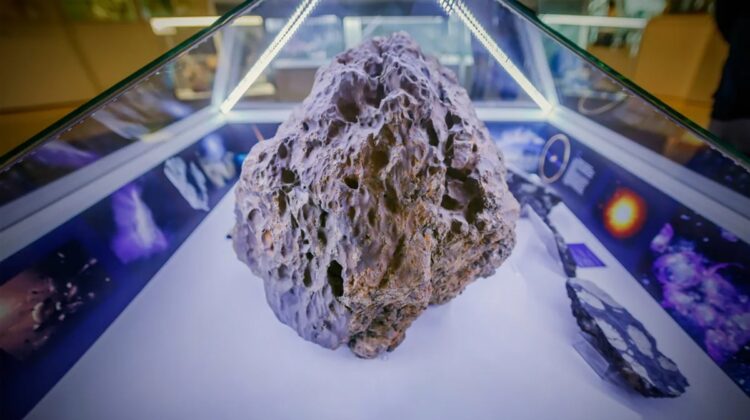
Carbon crystals with exotic structures that had never been seen before were found in the dust left behind by the Chelyabinsk meteor.
Carbon microcrystals with “unusual morphological features” have been discovered in the debris of a meteorite that erupted over southern Russia in February 2013. The Chelyabinsk meteor, which measured 18 meters (59 feet) broad, burst apart high in the sky, releasing a dust cloud that circled the earth in four days.
After retrieving some of the particles left behind by the superbolide, experts were astounded to discover that these small grains of crushed space rock contained carbon crystals with hitherto unseen “exotic” shapes.
The study authors describe their discovery in The European Physical Journal Plus, stating that “unique carbon crystals with a size of several micrometers, which had not before been detected, were discovered during an in-depth investigation of the meteoritic dust.”
When a meteor reaches the Earth’s atmosphere, the extreme temperature and pressure force microscopic particles to break away from the main body, resulting in a cloud of meteorite dust. Typically, this fine material disappears into the sky or becomes mixed with terrestrial soil, making recovery and research impractical.
Fortunately, the weather in Chelyabinsk at the time of the occurrence allowed some of the dust to become trapped between layers of snow on the ground, providing scientists with an excellent opportunity to extract some. While looking at the well-preserved grains with a conventional microscope, the researchers got attracted by certain odd-appearing crystals and chose to investigate further with electron microscopy.
“These objects had a magnificent facet shape with quasi-spherical symmetry,” the scientists write, adding that some of the crystals had a “hexagonal rod” structure. They found that the crystals were made of layers of graphite encircling a center “carbon nanocluster” using Raman spectroscopy and X-ray diffraction.
The researchers used molecular dynamics simulations to investigate how such structures may have originated. They discovered that crystals may form around center nanoclusters made of either a cage-like ball of 60 carbon atoms known as buckminsterfullerene or a chemical known as polyhexacyclooctadecane.
While it’s virtually likely that tremendous temperatures and pressure had a role in the production of these odd space rock crystals, the exact procedures that resulted in their formation remain a mystery.
Further research may help to fill these information gaps, but for now, the scientists conclude that the “unique structures identified in the meteoritic dust that have not been observed previously illustrate nature’s limitless capacity to create novel materials.”

Leave a Reply